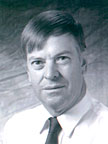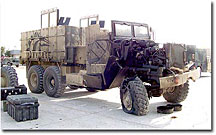| Research
|
Visitors to the new Innovation Hub in Pretoria , South Africa , can drive down a street named after Michael Thackeray, of DOE's Argonne National Laboratory. Thackeray is one of 11 notable South African scientists and innovators to be honored with his own street name. The Innovation Hub is the first science park in Africa. Thackeray, a materials scientist in Argonne 's Chemical Engineering Division, is perhaps best known for his research on electrode materials for lithium batteries; the technology he developed helps power everyday objects like cellular telephones. The materials technology was commercialized while Thackeray worked for the Council for Scientific and Industrial Research (CSIR) in South Africa . Thackeray was honored alongside his former CSIR colleague, Johan Coetzer, the pioneer of sodium-metal chloride ("Zebra") battery technology. Around $50 million has already been invested in the Innovation Hub, one of 11 big projects in an initiative to invest in the economic infrastructure of the Gauteng province, in which Pretoria , or Tshwane, is located. Thackeray said the province has long been a powerhouse of the science and technology that has come out of the country. Thackeray was born in Pretoria and graduated from the University of Cape Town . He said his return trip to South Africa was especially heartwarming because the country was making great strides forward, despite its racially divided and volatile past. Thackeray said, "Through the leadership of previous presidents Nelson Mandela and F.W. DeKlerk, who negotiated a remarkably peaceful transition of political power a decade ago, the people have come together in a really positive way. Science and technology have historically been rooted in the white community of South Africa . Now there's a tremendous impetus to train the next generation of all South Africans." Thackery will be honored again this fall when he receives the 2005 Research Award of the Battery Division of the Electrochemical Society and presents an award address summarizing his career as a leading researcher in the field of lithium-ion batteries.Submitted by DOE's Argonne National Laboratory
|
|||||||||||||||||||||||
|
Check out symmetry—the
|
New tool gives emergency responders access to informationSavannah River National Laboratory is participating, along with the University of South Carolina and the Environmental Protection Agency, in a NASA funded project to give hazard response personnel better access to information they need for decision-making. The project is entitled “Development of Remote Sensing-assisted Natural and Technological Hazards Decision Support Systems (DSS).” This DSS will access and process available and relevant information to support decision-making by hazard response personnel. The system will include information on available remote sensing resources that can be used to track and/or predict direction that a hazardous material release will take, and predict the damage, if any, that will occur. The project is led by Dr. John Jensen of USC and three co-principal investigators from that institution. Dr. John Gladden of the Environmental Sciences and Technology Department leads the SRNL team, while two investigators from the Environmental Protection Agency and one from NASA make up the remainder of the team. The research will concentrate on four sub-projects that are especially important in the hazard emergency response cycle:
SRNL's role in the project is focusing on the development of high resolution (e.g. hyperspectral) remote sensing methodologies to detect imminent failure of closure caps, like those used to close and protect areas where hazardous and radioactive waste has been disposed. Tests are being conducted at a set of experimental closure caps constructed near the Savannah River Site Burial Ground Complex. Various failure modes were induced in the experimental capping systems. SRNL and USC researchers will use a combination of Light Detection and Ranging (LIDAR) techniques to provide fine scale topographic data and hyperspectral data to detect differences in vegetation health, and then will analyze the data to detect and confirm areas where the closure cap has settled or sunk. Detecting these incidents of subsidence, as it is called, is important, because subsidence can be a precursor to the release of contaminants buried beneath the cap. The hypothetical release of contaminants will be analyzed in the remaining hazard analysis tasks. Submitted by DOE's Savannah River National Laboratory |


